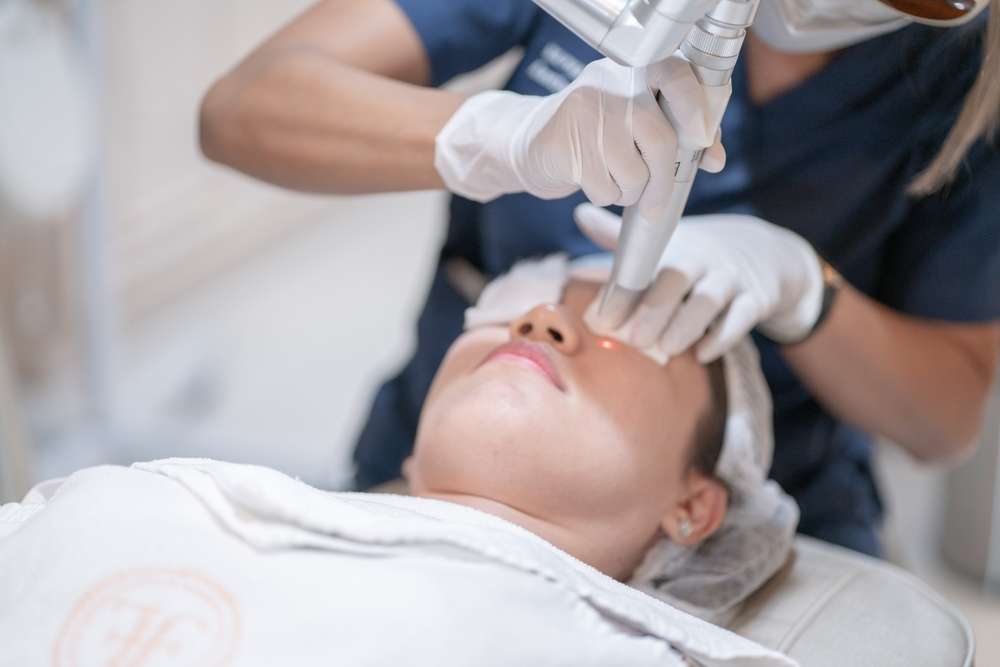Advanced Laser Skin Therapy: Rejuvenate Your Complexion
Discover how modern laser skin treatments use concentrated light energy to refresh and repair skin, stimulate collagen, and reduce imperfections. From non-ablative to fractional and ablative systems, learn which options treat wrinkles, scars, pigmentation, unwanted hair, and more. Find out what to expect during sessions, recovery times, typical costs, and safety considerations so you can make an informed choice about laser skin rejuvenation.

Laser procedures have become a cornerstone of non-surgical skin rejuvenation, offering targeted ways to improve texture, tone, and overall appearance. By using focused light energy, these treatments encourage cellular renewal and collagen remodeling, helping skin look smoother and more youthful with minimal invasiveness. Below is an overview of laser types, common uses, what happens during a visit, expected number of sessions, possible side effects, and cost considerations to help you decide if laser therapy is right for you.
Types of laser treatments and how they work
Different laser technologies are designed for particular goals and depths of penetration:
-
Ablative lasers: These remove the epidermis and part of the dermis, promoting regeneration. They are most effective for deep wrinkles, pronounced scarring, and significant sun damage, but require longer healing time.
-
Non-ablative lasers: These heat the underlying skin without stripping the surface, stimulating collagen production while preserving the outer layer. They are suited for mild to moderate concerns and typically have shorter downtime.
-
Fractional lasers: Instead of treating the entire surface, fractional devices create microscopic columns of thermal injury surrounded by untreated tissue. This approach speeds recovery while triggering strong healing and collagen formation, making it useful across a range of concerns.
Your clinician will recommend a specific device and settings based on your goals, skin type, and tolerance for downtime.
Skin concerns commonly treated with lasers
Laser therapy is versatile and can address many dermatologic issues, including:
- Fine lines and deep wrinkles
- Age spots and sun-induced pigmentation
- Acne scars and other types of scarring
- Uneven skin texture and tone
- Enlarged pores
- Rosacea and persistent facial redness
- Unwanted hair reduction
- Tattoo removal
- Stretch marks
- Hyperpigmentation and melasma
Because outcomes depend on technology and individual skin characteristics, an assessment by a qualified dermatologist or licensed provider is essential to select the best approach.
What to expect during a laser session
A typical appointment follows several clear steps:
-
Consultation: Your provider evaluates your skin, discusses medical history and expectations, and outlines the recommended laser type and treatment plan.
-
Preparation: The area is cleansed. For more aggressive procedures, a topical anesthetic or oral medication may be given to increase comfort.
-
Protection: Both patient and practitioner wear protective eyewear to block the laser light.
-
Treatment delivery: The clinician moves the laser handpiece over the target area, delivering controlled pulses of light or heat. You may feel sensations described as warmth, snapping, or tingling.
-
Immediate aftercare: Cooling gels, soothing ointments, or dressings may be applied to reduce discomfort and inflammation.
Sessions vary in length depending on the area and device — from about 15 minutes for small spots to over an hour for full-face or larger regions.
Typical number of sessions and scheduling
How many appointments you need depends on the laser type and the condition being treated:
- Mild concerns: Often 3 to 5 sessions spaced 4–6 weeks apart.
- Moderate issues: Commonly 5 to 8 sessions with 3–4 week intervals.
- Severe or deep conditions: May require 8 to 12 sessions or more, with timing individualized by the treating clinician.
Results usually accumulate over time. Some patients notice visible improvement after one treatment, while others achieve optimal results only after several sessions.
Potential side effects and recovery timeline
While lasers are generally safe when performed by trained professionals, side effects can occur:
- Redness and swelling: The most common immediate reactions, usually resolving within a few days for non-ablative therapies and longer for ablative procedures.
- Temporary pigment changes: Treated areas may darken or lighten temporarily; people with darker skin tones may be at higher risk for pigment shifts.
- Mild bruising: More likely where skin is thinner, such as around the eyes.
- Scabbing or crusting: Particularly after ablative treatments that remove surface layers.
- Infection: Rare if post-treatment care is followed correctly.
Recovery varies by treatment intensity. Non-ablative procedures often allow a quick return to normal activities (1–3 days of minimal downtime), while ablative lasers may need one to two weeks or more for healing.
| Treatment Type | Average Cost Range | Number of Sessions | Recovery Time |
|---|---|---|---|
| Non-ablative Laser | $200 - $800 per session | 3-5 sessions | Minimal, 1-3 days |
| Ablative Laser | $1,500 - $3,000 per session | 1-3 sessions | 1-2 weeks |
| Fractional Laser | $500 - $2,500 per session | 3-5 sessions | 3-7 days |
Prices, rates, or cost estimates mentioned in this article are based on the latest available information but may change over time. Independent research is advised before making financial decisions.
Choosing a provider and final considerations
Selecting an experienced dermatologist or licensed laser specialist is key to safe, effective results. During your consultation, ask about the provider’s experience with the specific laser, view before-and-after photos of similar cases, and discuss realistic expectations and aftercare instructions. Disclose any medications, recent sun exposure, or a history of keloids or pigmentation issues — these factors can influence the choice of laser and the risk profile.
Laser skin treatments offer a powerful way to rejuvenate complexion and address many common skin concerns by harnessing the body’s natural healing processes. With proper evaluation, an individualized plan, and attentive aftercare, many patients enjoy noticeable improvements with manageable downtime. Always weigh benefits, risks, and costs when planning treatment.
This article is for informational purposes only and should not be considered medical advice. Please consult a qualified healthcare professional for personalized guidance and treatment.






